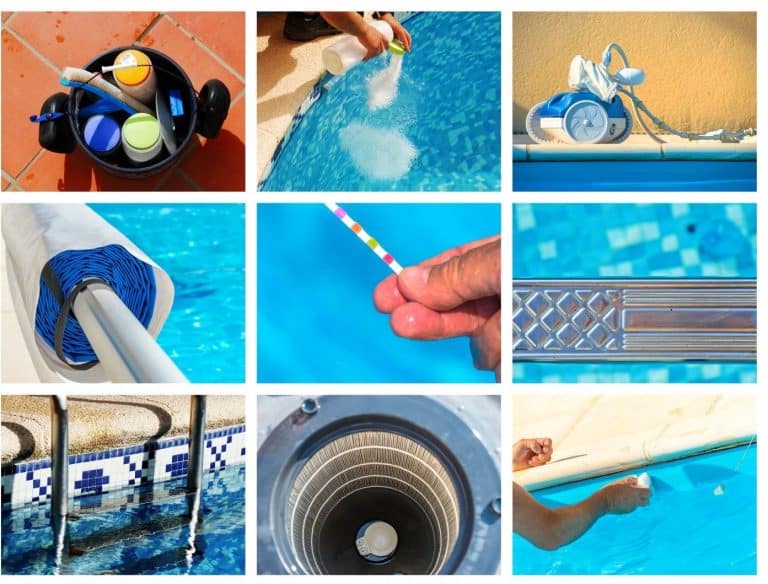We are reader supported, and may earn commissions from links on this page.
Are you closing your above ground pool soon? You may want to try some new methods. That way, you can feel confident that winterizing your above ground pool is going to go more smoothly this year than it did the last.
When you take the time to close your pool, you are also ensuring that it has a much longer lifespan. So, since you want your investment to last until the next summer rolls around, we recommend that you follow our steps to winterizing!
Here is what you need to do.
Table of Contents
1. Maintain the Pools PH
A few weeks before you know you need to close the pool, keep testing the pH levels and keeping it in a healthy range. Too often people give up on keeping the pH in the best spot before winter comes. However, this builds bad habits and allows bacteria to build up in the water.
If you are leaving the water in your pool over winter, the bacteria will continue to grow. You may also have issues with algae. Overall, make sure that you are still taking care of the pool properly. You don’t want things to go south before you even start the winterizing process.

2. Clean Your Above Pool
Next, you will want to thoroughly clean the pool. That means getting in and doing some intense brushing. You want to make sure that there is no scaling or film on the sides, since that can cause problems while the pool is closed. Plus, you don’t want to cover the pool with debris in it- doing so could lead to mold and other issues.
3. Test the Water Again
Once you have cleaned the water, make sure you take the time to test it again. Doing so will ensure that your pool is kept in the best condition for the winter. You don’t want to cover it if the water isn’t at the best pH level, so make sure to continue checking it.
The pool should have a pH between 7.4 and 7.6, along with an alkalinity of 100 ppm at least. Once you have tested the water, make sure to thoroughly sanitize the pool.
Keep in mind, it’s alright to store your pool at a higher level. The chemicals and chlorine may be too high to swim in, but that will keep the water clean until you are ready to use it again.
4. Put in Winterizing Chemicals
Now, you can add your winterizing materials to your above ground pool. They help during the cold months, so your liner is not damaged by the chemicals or water. There are plenty of winter closing kits available on the market. They include everything that you need- so you don’t have to play scientist and figure everything out for yourself. Many people prefer this option over the alternative.
Finally, when you are done, make sure the water has a balanced pH level and a good alkalinity level. They should fall into the range listed on the winterizing kit, which varies between sizes of pools.
The ideal range for alkalinity is going to be between 100 and 150 ppm, but make sure to shoot for a higher number when closing. It helps to make these changes before you adjust the pH levels in the pool.

5. Check Calcium Hardness
Before you put the cover on your pool one last time, make sure that you have the calcium hardness at the right level. Hard water can deposit calcium in your pool, which forms a layer over time. Needless to say, this should be avoided at all costs.
However, if the water is too soft, it will damage the pool tiles as it tries to suck calcium from them. If you are closing an above ground pool, this can also cause serious damage to the material.
6. Shock the Swimming Pool
Depending on the size of your pool, you will want to shock it. Doing so will prevent anything from growing the water, making it easier and safer to open later on. Make sure you do this at night, so the pool has time to settle and adjust before the next day.
7. Cover Your Above Ground Pool
Finally, winterizing an above ground pool includes using pool covers. You should make sure the cover is attached correctly and tightly- you do not want it to sag in during the winter. It helps protect your pool from ice, snow, and debris.
